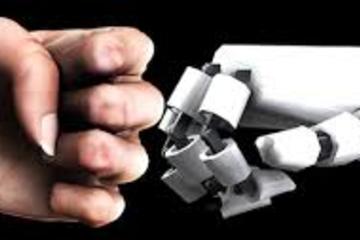Browse
Disciplinary Content
Posted on: Assignment Test Group

Disciplinary Content
test
Posted by:
Rashad Muhammad
Posted on: Agile testers group 2

Disciplinary Content
WHAT IS WORKPLACE FLEXIBILITY?
Posted by:
Chathuri Hewapathirana 1

Posted on: #iteachmsu

Disciplinary Content
Getting Started with the #iTeachMSU Commons
Posted by:
Rashad Muhammad

Posted on: #iteachmsu



Posted by
over 6 years ago

Big data is more than high-volume, high-velocity data. Learn what big data is, why it matters and how it can help you make better decisions every day.
Disciplinary Content
Posted on: #iteachmsu



Posted by
over 6 years ago

Science and technology is a topic that encompasses science, technology, and the interactions between the two. Science is a systematic enterprise that builds and organizes knowledge in the form of explanations and predictions about nature and the universe. Technology is the collection of techniques, methods or processes used in the production of goods or services or in the accomplishment of objectives, such as scientific investigation, or any other consumer demands.
Science may drive technological development, by generating demand for new instruments to address a scientific question, or by illustrating technical possibilities previously unconsidered. In turn, technology may drive scientific investigation, by creating demand for technological improvements that can only be produced through research, and by raising questions about the underlying principles that a new technology relies on.
For the majority of human history, technological improvements were achieved by chance, trial and error, or spontaneous inspiration. When the modern scientific enterprise matured in the Enlightenment, it primarily concerned itself with basic questions of nature. Research and development directed towards immediate technical application is a relatively recent occurrence, arising with the Industrial Revolution and becoming commonplace in the 20th century.
As academic fields, science and technology are often grouped with engineering and mathematics, as the STEM fields.
Science may drive technological development, by generating demand for new instruments to address a scientific question, or by illustrating technical possibilities previously unconsidered. In turn, technology may drive scientific investigation, by creating demand for technological improvements that can only be produced through research, and by raising questions about the underlying principles that a new technology relies on.
For the majority of human history, technological improvements were achieved by chance, trial and error, or spontaneous inspiration. When the modern scientific enterprise matured in the Enlightenment, it primarily concerned itself with basic questions of nature. Research and development directed towards immediate technical application is a relatively recent occurrence, arising with the Industrial Revolution and becoming commonplace in the 20th century.
As academic fields, science and technology are often grouped with engineering and mathematics, as the STEM fields.
Disciplinary Content
Posted on: iteachmsu sub group



Posted by
over 6 years ago

Inspired by John Hattie, a middle school math teacher encourages students to articulate and measure their own learning.
Disciplinary Content
Posted on: #iteachmsu



Posted by
over 6 years ago

P-Just Embed a Phone Into This Editor’s Mind, Already
Choire Sicha, who runs The New York Times’s Styles desk, has such a close relationship with his smartphone, he says, it may be time to “punch the circuitry into the back of our skull.”
Choire Sicha, who runs The New York Times’s Styles desk, has such a close relationship with his smartphone, he says, it may be time to “punch the circuitry into the back of our skull.”
Disciplinary Content
Posted on: #iteachmsu

Disciplinary Content
Playlist using bookmarks- Jagruti
Posted by:
Jagruti Joshi

